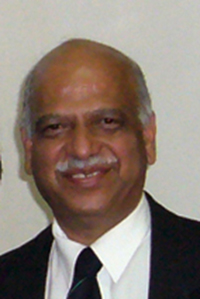Career
After returning to India, Gadre joined as a lecturer at the Department of Chemistry of University of Pune and became a Professor of Physical Chemistry [1] in 1988. Since joining the University of Pune, Gadre's work has focused on the study of molecular scalar fields and their topographical characteristics. In 1985 he proposed a new maximum entropy principle which has been since investigated by other researchers. Gadre has been at the forefront of investigating chemical reactivity and weak interactions through the use of molecular electrostatics potentials and momentum densities. Gadre has also contributed to algorithms and codes for efficiently parallelising quantum chemical ab inito calculations. Recently he has pioneered a technique called the Molecular Tailoring Approach that seeks to calculate accurate one-electron properties for large molecules by breaking down the molecules into fragments and then combining calculations on individual fragments. This approach is now extended to perform geometry optimisation as well as Hessian (vibrational frequency) calculation of large molecules in an efficient manner even on a common personal computer.
In 1995 Professor Gadre founded the Interdisciplinary school of scientific computing at the University of Pune and has since served as its director. He has authored and co-authored over 220 articles in high-impact journals. He has mentored 26 PhD students and 46 Master's degree students. Professor Gadre has also authored, co-authored several book chapters. [2] [3] [4] [5] [6]
He is known for his contributions to the growth of computational technologies in Chemistry, Physics and scientific computing in India. [7] [8]
He moved to the Indian Institute of Technology Kanpur, India on 22 July 2010.
He returned to University of Pune in 2016 as a Distinguished Professor in Interdisciplinary School of Scientific Computing.
This page is based on this
Wikipedia article Text is available under the
CC BY-SA 4.0 license; additional terms may apply.
Images, videos and audio are available under their respective licenses.
